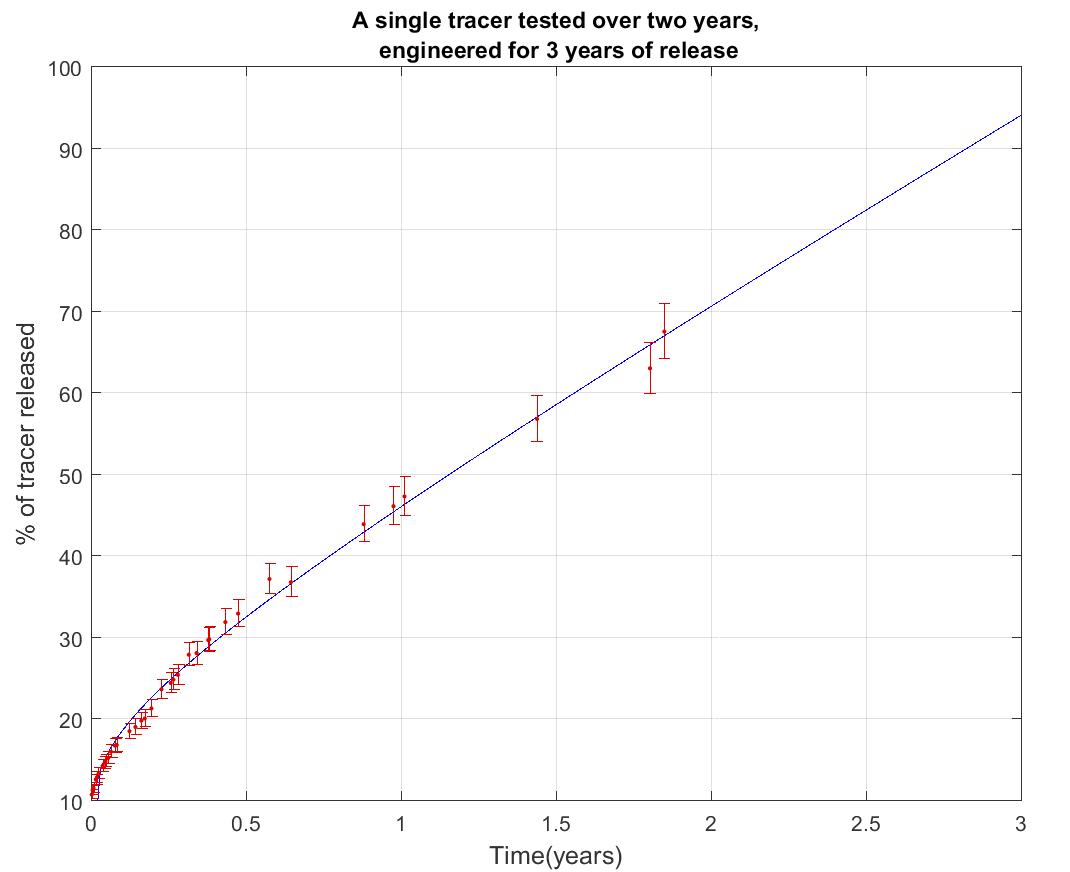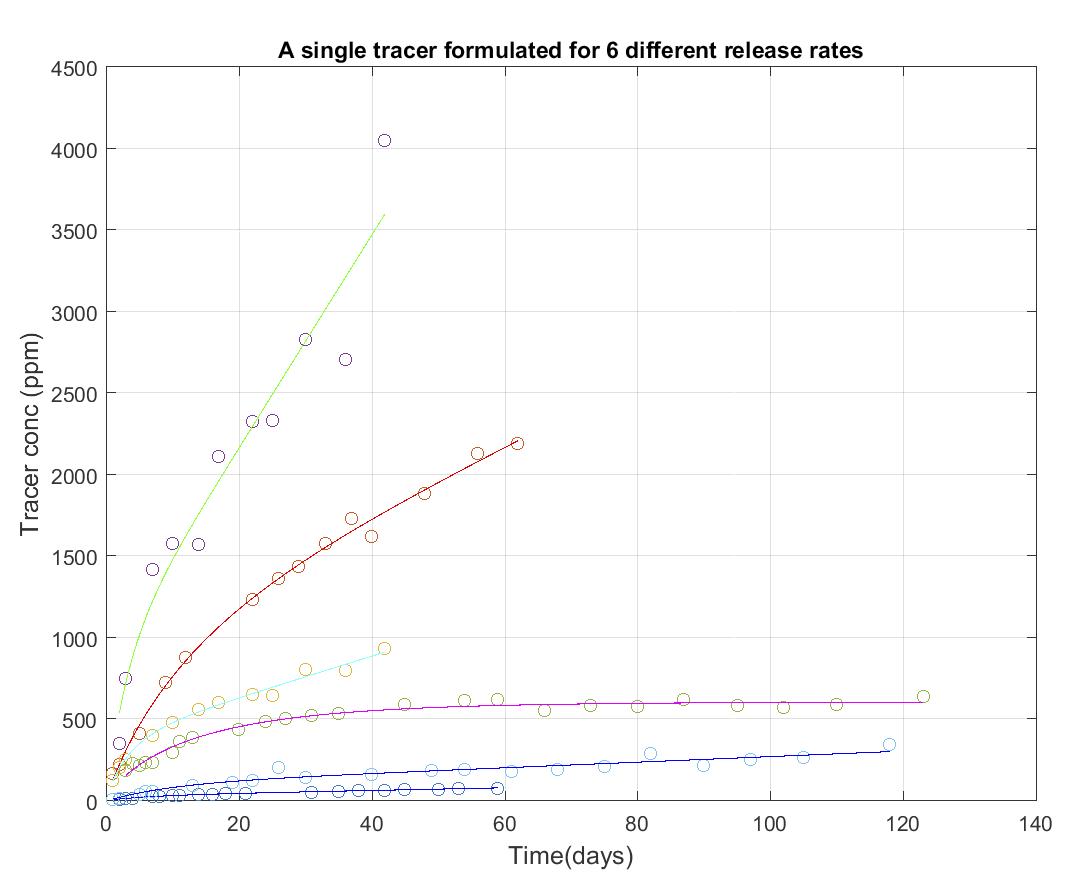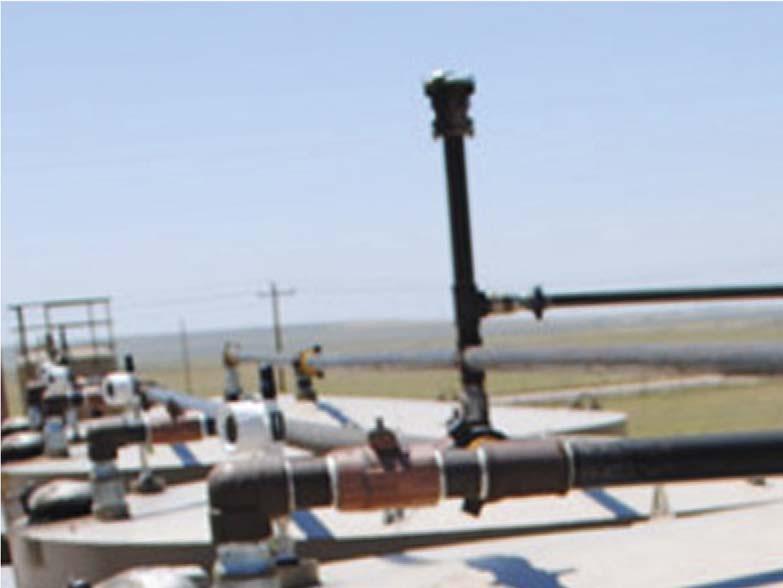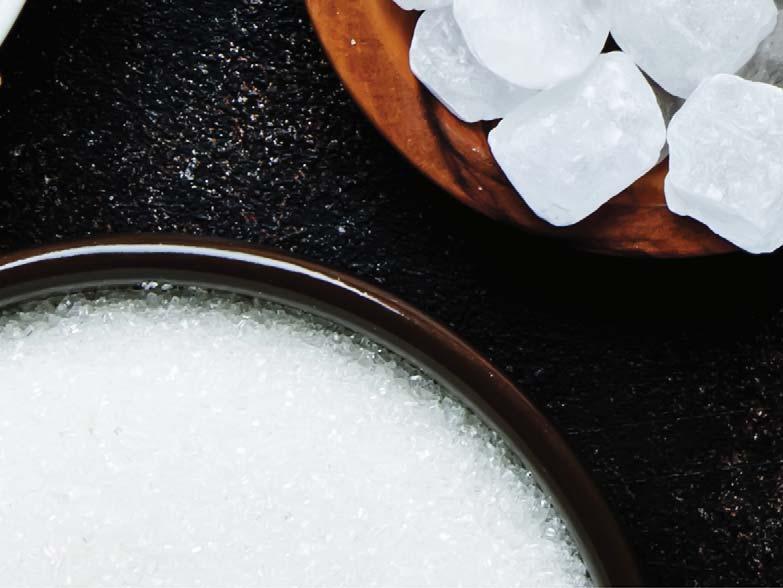
7 minute read
Disrupting traditional tracing trajectories
traditional traditional trajectories trajectories


Though non-radioactive chemical tracers have been in use since the 1940s, new options become available every year, designed to expand the detection limits, increase longevity in the reservoir, and explore the fundamental underpinnings of oilfield tracers in new ways. One novel breakthrough for oilfield chemistry was the introduction of the microencapsulation of tracers. Microencapsulation is a process that enables the controlled loading and release of tiny particles or droplets from within hollow particles, typically between 1 – 1000 µm. Embedded within a homogenous or heterogeneous matrix, these microparticles can encapsulate a variety of solid, liquid, or gaseous substances; as the core material gradually diff uses through the capsule walls, the microparticles off er controlled release of the encapsulated material under desired conditions.
Microencapsulation has been used across numerous industries as a method of controlled delivery, spanning a variety of fields including pharmaceuticals, food and nutrition products, and cosmetics. Its rapid adoption is due to the myriad advantages microencapsulation provides, such as protection of the encapsulated agent from chemical or biological degradation, accurately controlled release rates of the incorporated product, control of volatile evaporation or losses, and oft entimes improved handling or manipulation of the product. However, its application to the oilfield is still relatively novel with speciality manufacturers encapsulating only a limited selection of oilfield chemicals. Some common remediation products, such as scale inhibitors, antibacterial agents, and chelating agents may be purchased in a microencapsulated form, but no microencapsulated tracers are not currently in use within the industry.




The value of microencapsulation to inflow tracer studies
Though non-radioactive tracers come in a variety of diff erent forms, a common application is the use of polymer tracer rods to quantify the inflow production profile of a well. This type of tracer study is achieved by casting a phase-specific tracer (e.g. oil, gas, or water) within a polymer matrix, usually with the shape of a bar or rod. Once the carrier polymer hardens around the chemical tracer, the cast polymer tracer rods can be cut and shaped to size and installed into the well completion, typically within the drainage layer of a sand control screen. When the completion is run in-hole, the polymer tracer rods begin to elute their unique chemical marker upon contact with their corresponding fluid phase. A typical well, before being brought online, is usually in contact with oil along the wellbore and continues to contact oil over the lifetime of the well, allowing the oil polymer tracer rods to elute their oil marker. When water breakthrough occurs, installed water polymer tracer rods begin to elute their water markers. By capturing samples of the produced fluids at surface at diff erent time intervals, it becomes possible to measure the concentration of each unique chemical marker and quantify where along the wellbore and at what rate the diff erent fluid phases are being produced.
As a diagnostic method to understand fluid production and how a wellbore is interacting with the reservoir, these polymer tracer bars are an exceptional tool. They benefit from being a low-cost, passive system, which does not require the installation of secondary tool systems, wires, or cables, and is able to avoid restricting the inner diameter of the well. However, they suff er from a significant limitation in eff ective life; installed within the drainage layer of sand control screens, there is a limited working space to place tracers and once the implanted tracer is consumed, there is no mechanism to replace or replenish the installed polymer bars. For this reason, traditional tracer bars rarely exceed a working life of two to three years under real world conditions, a significant barrier to long-term studies of wellbore performance.
However, by creating a distribution of microparticles with diff erent cell wall thicknesses, microencapsulated polymer tracer bars overcome the limitations of traditional tracer rods with their rapid matrix diff usion rates and instead prolongs tracer release. Unlike their traditional counterparts, a microencapsulated tracer rods can only allow a portion of the enclosed tracer to diff use out of the rod when contacting the markable phase. As these tracers are produced, new volumes of embedded tracers become exposed to in-situ fluids as their microparticles breaks down, essentially ‘replacing’ the spent rod passively and without any intervention from surface. In optimising this release response, microencapsulated tracers may provide threefold improvement or more in working life in



Long-term laboratory testing of microencapsulated tracers
As a result, Tracerco has developed an advanced synthesis method to encapsulate their suite of oilfield tracers. For its suite of commercial
Table 1. An estimation of tracer life based on achieved elution rates (assumes a well production 5000 bbls of the targeted production fluid and 250 standardised Tracerco tracer bars installed)
Targeted tracer concentration, ppb Required tracer release rate, mg/cm 2 /day Expected release life, years
1 0.01 35.9
5 0.05 7.2
10 0.10 3.59
20 0.21 1.8
50 0.53 0.7


Figure 2. Customising the microencapsulation process to achieve diff erent tracer release rates.
tracer off erings, a microencapsulated polymer product can be tuned to elute tracers at any rate between 0.001 to 10 mg/cm 2 /day. By having a tunable release rate, the microencapsulated polymer tracer rods can be adapted to meet any client demand from initial production confirmation and quantification to long term monitoring of reservoir dynamics. Two release profiles have been developed for commercial use: the first has a large initial release of tracers, followed by a lower steady-state release that is ideal for quantifying inflow production profiles while the second maintains a consistent linear release rate over the entirety of the polymer tracer rod life. In Figure 1, 2 years of elution test data is provided for a microencapsulated polymer tracer rod designed for a 3-year lifespan. Unlike a traditional polymer rod, a microencapsulated polymer tracer rod has an observable linear release over its extended lifetime. This rate of release can be modified for tracer studies ranging from 2 months to potential decades, always with a repeatable, consistent and linear release. In Figure 2, the same tracer was tweaked for diff erent desired study lifetimes. Though the tracer release rate proved adjustable, the consistent linear release rate was preserved.
The consistent linear release of tracer allows for the microencapsulated product to achieve working lifetimes. Consider a typical polymer tracer rod deployment within a well producing 5000 bbls of fluid a day with a reservoir temperature of 60˚C. Depending on the analytical limits of detection for the chemical tracer, laboratory testing thus far indicates that a microencapsulated tracer can produce a measurable signal over decades of well life rather than months or years. In the development of this product, Tracerco has created eff ective microencapsulated tracers for wells ranging in temperature from 60˚C to 120˚C with the same consistent, repeatable tracer performance.
Nevertheless, no matter how promising laboratory data is, new technologies need to be proven in the field. The company’s microencapsulated off erings now also have documented long-term performance from multiple trial wells. One early field trial deployed microencapsulated tracers into an oil well in late 2018. Exposed to reservoir temperatures of 90˚C (194˚F), microencapsulated tracers have been successfully measuring the zonal distribution of the 9000 bbls of oil produced daily with steady-state tracer concentrations still in excess of 10 ppb aft er more than 2 years of production. Per the operator’s feedback, this has been their best experience with deployed tracers to date as all other ‘long-term’ tracers they have run have failed to live up to their advertised lifespan.
The next generation of microencapsulated products, whose development is already underway, will expand the technology in three critical ways: the creation of tracer-releasing microencapsulated ‘proppant’ that might be pumped as part of a hydraulic fracture treatment, rapid expansion of the number of tracers that can be microencapsulated, and finally expanded the technology to non-tracer chemicals. Soon this technology may be used for target delivery of a host of oilfield chemicals, ranging from biocides to chelating agents, from hydrogen sulfide scavengers to surfactants, or any other chemical treatment that would benefit from long term, targeted release in the well.
Conclusion
Though still in a field-trial stage of development, microencapsulated tracers are a potentially disruptive technology to traditional well inflow diagnostics. Maintaining all of the advantages of tracer studies to date, including low-cost, the lack of well intervention, and operational simplicity, microencapsulated polymer tracer rods take a technology proven outside of the oilfield and achieves new limits to the lifespan of tracer studies. By controlling the distribution of microparticle sizes and rate of tracer release, microencapsulated tracers promise a customisable solution to reservoir diagnostics.










